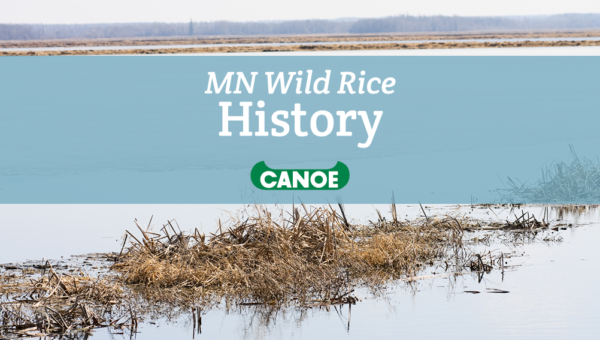
Wild rice has a far richer history than simply being the “state grain” of Minnesota. In fact, long before settlers came to Minnesota, wild rice was (and remains to this day) at the heart of the Ojibway culture and diet, which is why they refer to it as a gift from the Creator. According to Ojibway history, wild rice led them to this land. They followed a prophecy to find the place where the food grows on the water, which brought them to the shores of Lake Superior in Minnesota. Rick Smith works with American Indian youth at the U of M and, as he explains, “Rice is very spiritual for us. That’s why we came here.”
The rice begins as an aquatic grass and, after completing the age-old process of finishing, ends up as the dark brown, irregular sized grains that many have come to know and love. Wild rice had been a rare Minnesota-grown treat for a long time. It is especially nutritious for humans and animals because its protein content is far higher than other cereal grains. In the 1960s, scientists and businessmen decided to use it for their own gain, so they began to commercialize the process by cultivating it in rice paddies and harvesting it with machines.
To this day, wild rice harvested in the native way is a primary source of income for the Ojibway. What does harvesting in the ‘native way’ mean? Well, to start, every part of the process, from harvest to finish, is incredibly labor intensive. There have been virtually no mechanical advancements in the way the the Ojibway harvest and finish the rice since they began doing so hundreds of year ago. Wild rice is found naturally in soft, muddy sediment of waters 6 inches to 3 feet deep in northern Minnesota lakes, marshes, and streams. The location of the rice requires that canoes are taken out on the water and the rice is harvested by hand. This requires two ‘ricers’ to a canoe; one with a forked push pole to move the canoe and the other with two wooden flails that they use to knock the rice into the boat. The finishing process is even more work. First, it’s roasted over a fire, then it’s hulled and winnowed, which can involve dancing the rice pit. Although the process of finishing wild rice was becoming a dying art, there has been a resurgence in interest from the younger generations on the reservations.
Luckily, since the early stages of the commercialization of wild rice, there have been many rules and regulations set on who can harvest it and where, as the rice is not only delicious and nutritious, but also, in the wild it serves as a natural habitat and nesting area for many species of birds. Additionally, the Ojibway Tribal harvesters manage themselves and remain the only group allowed to harvest the wild rice from lakes located on reservations. The government designated wild rice as Minnesota’s ‘state grain’ in 1977 (although, as previously stated it isn’t actually a grain, but an aquatic grass). This designation was meant to promote Minnesota, the rice itself, and commerce on Native American reservations.
